The history of Inventory+ provides a glimpse into why it’s a profit-driven inventory management solution built for dealers.
Inventory+ is a pricing, merchandising, and syndication machine, but at its core, it is powered by the Ideal Inventory Model™, an algorithm that focuses on profit per day. It is also the culmination of multiple tools and products that have led it to become as powerful as it is today. Since its inception, it has been a tool to help dealers manage their inventory from acquisition to disposition with a focus on increasing front-end profit for dealerships.
Inventory+ uses data-driven analytics to deliver quick answers about vehicles in a dealer’s inventory and market to help make informed stocking and pricing decisions. More importantly, its focus on inventory — from acquisition to disposition — is designed to drive profits for dealerships.
It was the foundation of two inventory software platforms — AAX and eCarList — that formed Inventory+.
Simplifying Vehicle Listings
The founder of eCarList, Len Critcher, had a dealership that sold vehicles entirely online. Although online sales were taking off, there was a lack of efficient software tools to create vehicle listings. The task at the time was manual and quite tedious.
Determined to simplify the process, Len, aided by a software developer, crafted a listing tool that housed information vital to online vehicle sales, such as photos, descriptions, and prices. The tool would then load that information onto third-party vehicle-shopping sites.
Len’s online car sales took off, and he quickly recognized that his tool could be adapted for use by other dealerships. The software developer moved into some extra office space at a shipping company in suburban Dallas, and eCarList, an automotive inventory and marketing software company, was born.
While eCarList was getting started, a shipping brokerage handled the shipment needs for over 200 dealers. It was realized that another essential tool for dealers could be included within eCarList – transportation management. Thus, a feature was added that allowed dealers to notify their shipping company when a vehicle was sold and ready for transport.
The majority of the dealerships served by the shipping brokerage were among the first to sign up for eCarList. It enabled their cars to be posted online faster, and they were excited that they could just click a button within the software, and an 18-wheeler would be sent to pick up their car.
As the software technology grew, the shipping business was exited, and eCarList saw the debut of one of its most popular enhancements, the TrueTarget™ mobile app, which allowed users to appraise, price, and manage inventory on the go.
AAX + eCarList
Both eCarList and AAX emerged in the early 2000s, when online retailing was in its infancy. Many features that appealed to dealers then continue to appeal to them now, though these features have been enhanced and refined.
One of AAX’s major strengths was its integration with a dealership management system to analyze past sales transactions and determine which vehicle makes, models, and trim levels sell fastest and for the most profit.
Those vehicles made up a dealership’s Ideal Inventory Model and still do.
Dealertrack Technologies integrated the products after acquiring AAX in 2009 and eCarList in 2011.
Using technology to enhance dealership profits isn’t a new notion for DealerSocket. So, in 2015, Inventory+ became part of DealerSocket’s suite of products.
Taking Inventory Management to the Next Level
Since then, particularly in 2019 and 2020, many new features have been released, and the software has been placed on a new platform. Inventory+ now has a new look and feel. It is nimble, intuitive, and easy to use, whether working with inventory at a single rooftop or across hundreds of dealerships.
Users can set up and save workflows for daily tasks, reducing the time to complete those tasks from hours to minutes, something that couldn’t be done in previous versions of the tool.
One dealer group describes the user experience as “frictionless.”
The enhanced pricing tool allows dealers to work faster and smarter. They can apply pricing rules to their inventory in bulk based on actual incentives from automakers while keeping an eye on other factors such as market conditions and competitors’ advertised prices in relation to MSRP.
In fact, one dealer repriced vehicles by exterior color as part of a Memorial Day promotion, discounting the prices of red, white, and blue vehicles in a matter of minutes.
Using the tool, the dealer searched for and pulled up red vehicles, hit “select all,” and updated their prices simultaneously. The same was done for white and blue vehicles, all within five minutes.
Additional Enhancements
Here are just some of the many Inventory+ enhancements made over the past year:
- The Ideal Inventory Model is more accurate and shows in greater detail how a dealership performs with similar vehicles being appraised, held in inventory, or considered for acquisition at auction. The goal is to show vehicle profit potential.
- Updated algorithms and data-cleansing technology enable better and more accurate snapshots of a dealership’s inventory, sales history with that inventory, and which vehicles are profitable.
- A new market graph, released earlier this year, provides greater visibility about price in the market by answering questions such as how a vehicle’s price in the market compares with its MSRP and how the price of a vehicle at a dealership compares with prices of similar vehicles at competitors. The graph also details how many of a specific vehicle competitors have for sale versus the number of similar vehicles in stock.
- Absolute Sourcing, also released this year, streamlines acquisitions by searching for and serving up ideal inventory matches missed during recent appraisals, available for trade at sister stores (if the dealership is part of a group), and available at auction.
- Inventory+ is now participating in General Motors’ Dealer Vehicle Inventory Management (DVIM) program, allowing GM dealerships using the inventory management tool to syndicate inventory to GM-participating website providers and programs, including the automaker’s Shop-Click-Drive e-commerce tool.
Since the early 2000s, software has been created to drive profitability at dealerships. In the past two years, innovation has accelerated. Now, more than ever, dealers need to evaluate their vendors and ask: Are they helping or competing against them?
DealerSocket’s new report provides a snapshot of inventory and web traffic trends
DALLAS, May 12, 2020 — DealerSocket, Inc., a leading SaaS provider to the automotive industry, today released new insights based on aggregated Inventory+ data that shows positive signs for the automotive market. Contained in the company’s new “DealerSocket COVID-19 Impact Report,” the aggregated data set of insights will be updated on a bimonthly basis. The first edition reveals a 34.3% increase in consumer trade appraisals between the weeks of April 6 and April 20 this year.
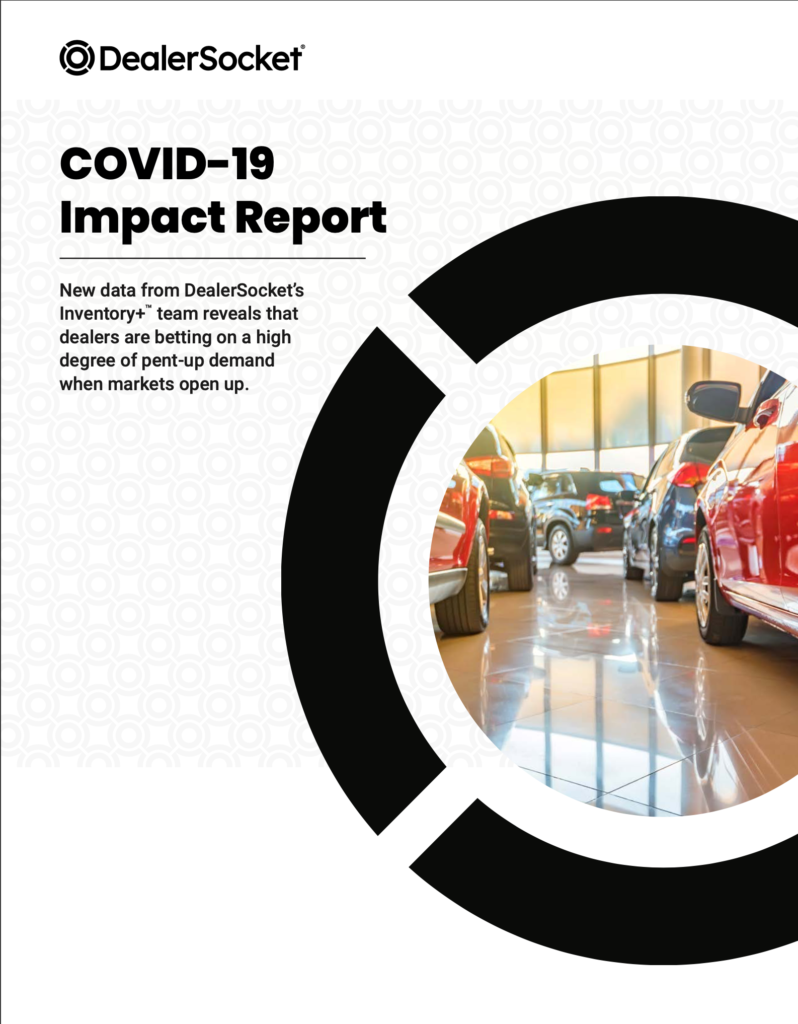
The report’s first edition also provides a deeper dive into inventory management trends during the COVID-19 period between the weeks of March 2 and April 20. Aside from insights from DealerSocket’s Inventory+ team, the report includes online shopping trends from DealerFire (DealerSocket’s digital and websites business), and regional lists outlining the top 10 pre-owned vehicles based on sales count, average turn, front-end gross, and average sales price.
“Dealers are optimistic by nature, and the data outlines trends pointing to potential recovery signs for the industry from the COVID-19 pandemic, with activity spiking since the U.S. Department of Homeland Security deemed auto sales essential on April 17,” said Brad Kokesh, general manager of DealerSocket’s Inventory+ business unit. “The report also outlines a pick-up in activity among consumers. What’s interesting is consumers continued to initiate appraisals through online lead forms throughout the month of March, and consumer trade appraisals have jumped more than 30% since the first full week of April.“
Here are key findings from the DealerSocket COVID-19 Impact Report:
- The number of total appraisals fell 34.4% from the first week of March to the first week of April.
- Total appraisals registered the steepest week-over-week dip the week of March 16, (showing -20% vs. the prior week), with Trade (involving consumer trade-ins) and Purchase (involving auction/wholesale vehicles) appraisals falling 26% and 35%, respectively, vs. the prior week.
- After registering a 2% week-over-week decline the week of March 16, appraisals initiated by consumers through online forms have held relatively steady through the week of April 20.
- Purchase appraisals recorded a 182% week-over-week spike the week of April 20, three days after auto sales were deemed essential by the U.S. Department of Homeland Security.
- Trade appraisals showed a 34.3% increase over a three-week span ending the week of April 20.
To access the DealerSocket COVID-19 Impact Report, click here.
New data from DealerSocket’s Inventory+ team reveals that dealers are betting on a high degree of pent-up demand when markets open up.
By Gregory Arroyo
Field reports from DealerSocket’s team of Strategic Growth Managers reveal that dealers haven’t pushed the panic button just yet. Their focus is on the high degree of pent-up demand they believe rests on the other side of the industry’s recovery from the COVID-19 pandemic, and the chance to pick up market share when markets begin to open up.
A Strategic Growth Manager operating in the Sacramento, Calif., area noted that dealers benefited from the way things came to a halt quickly vs. a slow drip. That allowed them to make inventory and staffing decisions through March, as well as seek expense relief from their floorplan finance sources and technology vendors.
For dealers with closed showrooms or stores operating with limited staff due to strict social distancing guidelines, there was little time to delve into emerging sales trends they had not experimented with before the pandemic. In a lot of cases, management teams handled appointments and sales in the absence of sales staff.
DealerSocket’s Strategic Growth Managers report many learnings and process refinements at dealerships, especially for operations that had tested remote sales and digital retailing.

By the Numbers (National):
- Total appraisals fall 34.4% from the first week of March to the first week of April.
- Total appraisals register steepest week-over-week dip the week of March 16 (-20%), with Trade (involving consumer trade-ins) and Purchase (involving auction/wholesale vehicles) appraisals falling 26% and 35%, respectively.
- Appraisals initiated by consumers through online forms hold steady through the period after inching down 2% the week of March 16.
- Purchase appraisals record a 182% week-over-week spike the week of April 20, three days after auto sales deemed essential by the U.S. Department of Homeland Security.
- Trade appraisals show a 34.3% increase over a three-week span ending the week of April 20.
Appraisals Fall
In terms of pre-owned inventory, Strategic Growth Managers operating in the Northeast report that some dealer groups were able to squeeze in trade desks just before stay-at-home orders took effect. Multi-state dealers on the East Coast were also able to reshuffle inventory out of areas with strict sales guidelines.
Beyond that, there’s wasn’t much to do with respect to managing inventory, aside from updating vehicle listing and other merchandising activities.
Virtual auctions reported strong attendance in March. The problem was, dealers weren’t buying, with KAR Auction Services reporting an 84% decline in volume for virtual sales nationwide. And with the physical auctions closed and big dealer groups not buying, the firm reported a 12% decline in wholesale values — 15% if adjusted for fewer lower-priced trade-ins.
“We have heard repeatedly from dealers … about their hesitancy to put a value on a trade-in that is not part of their core inventory,” Black Book stated in a recent report, adding that dealers are hesitant to get stuck with vehicles they don’t traditionally stock in a depreciating market.
Data from DealerSocket’s Inventory+ team shows a 20% week-over-week decline in total appraisals the week of March 16, when most stay-at-home orders took effect. Trade appraisals, or appraisals that occur on a customer’s trade-in, were down 26% during the same period, while “Purchase Appraisals” on wholesale and auction units plunged by 35%, according to the data.
Overall, appraisals were down 34.4% from the first week of March to the first week of April. However, activity has trended up since.
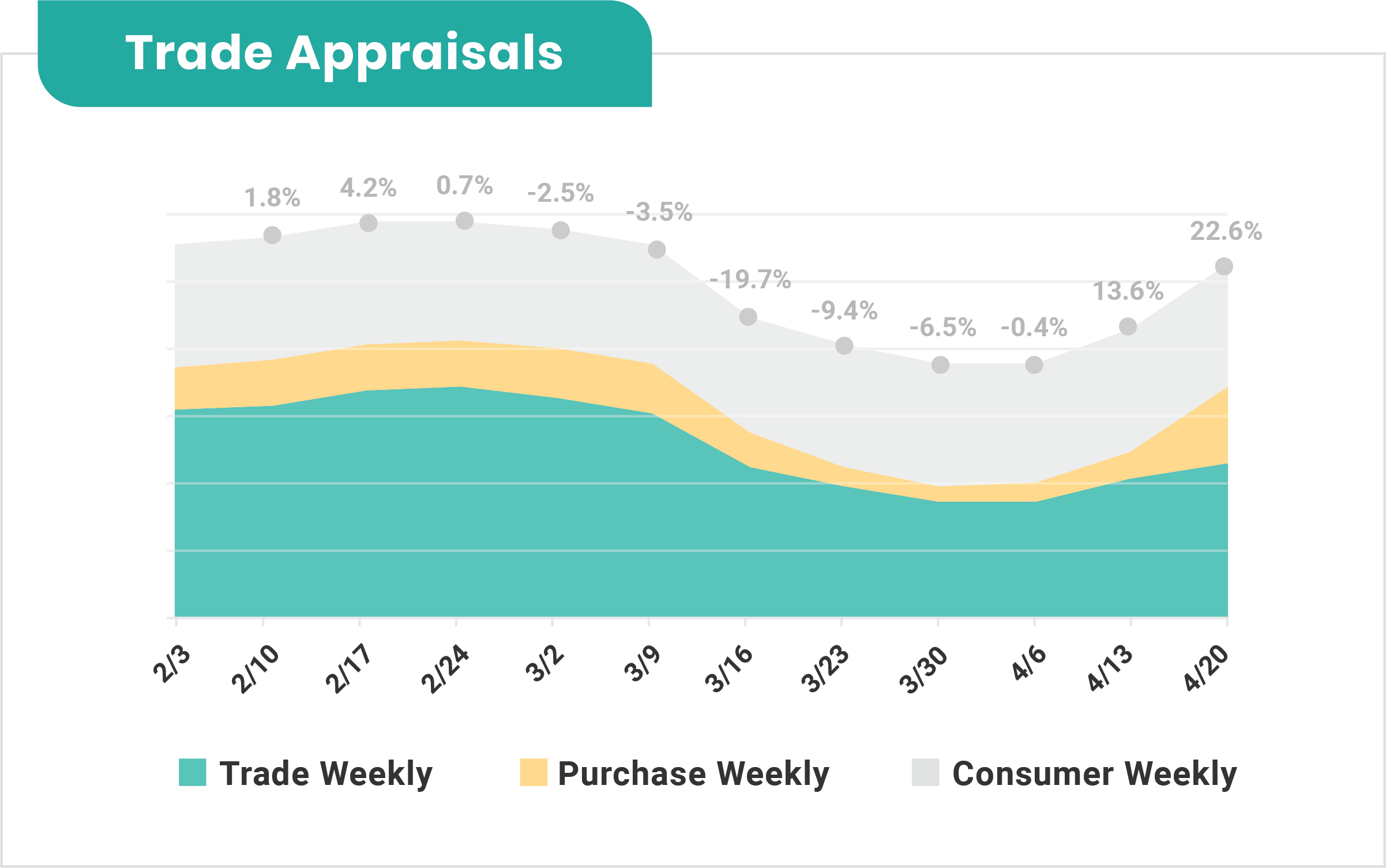
Markets In Recovery
As of the week of April 19, according to J.D. Power, nearly all markets are in recovery or exhibiting growth, as dealers adapt and selling regulations are clarified.
DealerSocket data also reveals a pick-up in activity, with appraisals spiking the Monday following April 17. That’s when the U.S. Department of Homeland Security deemed auto sales an essential service. Much of that lift, however, was from dealers appraising wholesale and auction vehicles, which increased 182% from the week prior.
DealerSocket’s data also revealed an uptick in consumer activity, with appraisals on consumer trade-ins increasing 34.3% during the first three weeks of April. Even more compelling is appraisals initiated by consumers through online lead forms remained steady throughout the period after inching down 2% on a week-over-week basis the week of March 16.
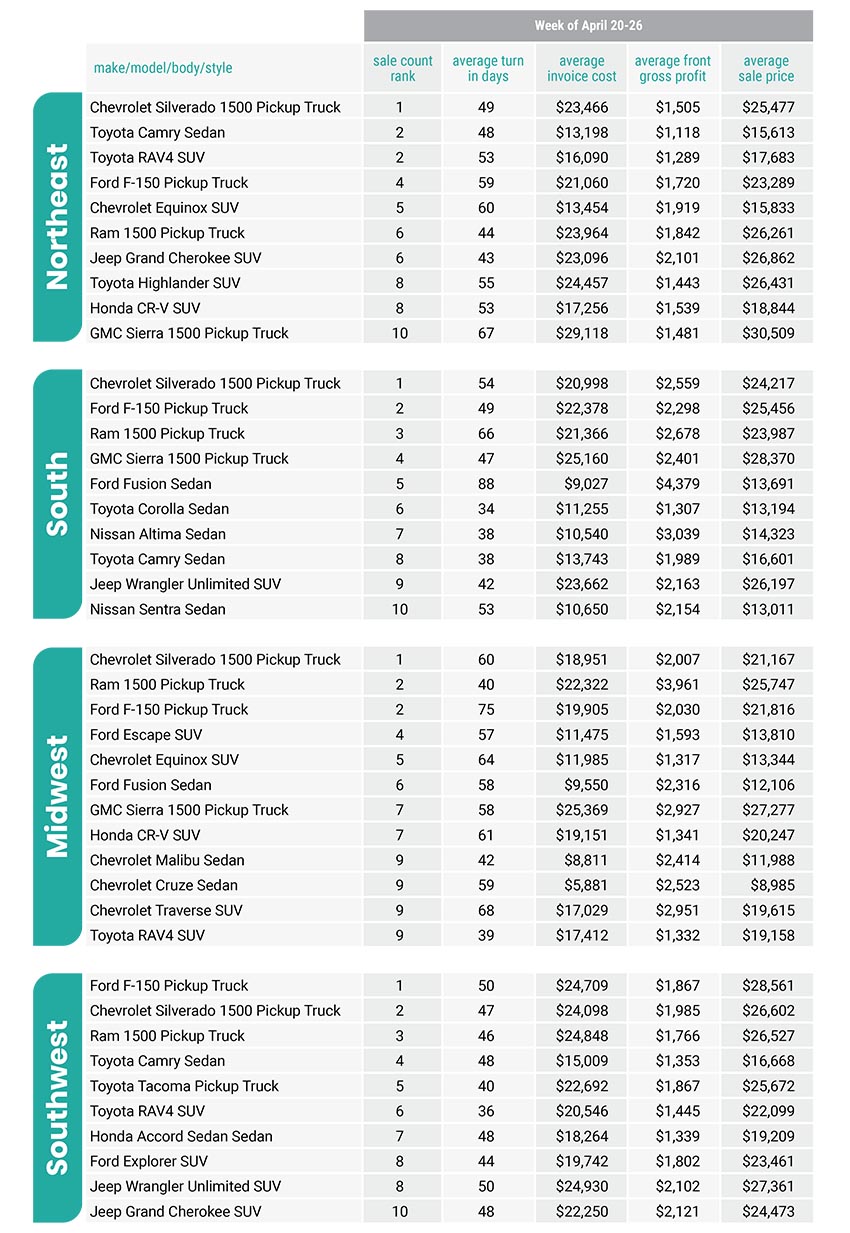
A snapshot of website traffic by DealerSocket’s DealerFire team also reveals a normalization of online consumer behavior, with organic traffic climbing 15% to 20% over the 10-day period ending on April 24. Dealerships located in states that allowed showrooms to remain open saw a sharper overall rebound. In contrast, dealers in states with a high number of COVID-19 cases continued to experience significant declines in site traffic.
However, those dealers are now starting to see increases, with consumers returning to more normal browsing behavior. “In both cases, traffic has rebounded in the past week,” read DealerFire’s April 24 Digital Marketing blog. “But in Texas, the traffic has already come back to very near pre-COVID numbers.”
Leads have also been trending upward, with DealerFire data revealing that dealers in areas less affected by COVID-19 are now seeing numbers equal or within striking distance of pre-COVID-19 trends. Even dealers in heavily impacted areas are seeing an uptick in lead submissions.
Late Models a Concern
On the retail side, dealers continue to hold the line in terms of their asking price for the Top 50 makes and models, which inched down 3% from the week of Feb. 16-29 to the week of April 14-20, according to DealerSocket data. However, there is evidence dealers are willing to meet customer demands, with the data revealing some front-end gross erosion. Still, dealers have lowered their selling price just 1% during the period. Days’ supply, however, was up 718%.
The immediate concern is aging, especially if the expected feeding frenzy never materializes. If it does, throw aging out the window, said on Strategic Growth Manager in the Northeast, as dealers will be able to demand higher gross profits. There are exceptions, however.
Current model-year and one-year-old pre-owned vehicles could be problematic, as automakers continue throwing big rebates, deferred payment programs, and other incentives on the hoods of new models. So far, according to J.D. Power, incentives remained at a record level of $4,700 per unit during the week of April 19, which could be enough to pull pre-owned buyers to new-vehicle lots.
Lease extensions permitted in March could also hamper the values of late-model units, with many of those off-lease vehicles expected to hit the market by the end of April.
As for profit drivers, the belief is the potential lies in three-, four-, and five-year-old vehicles, especially with the deadline for filing federal income taxes extended to July 15 and the IRS drowning in unopened tax refund requests.
That’s why dealers are holding onto inventory, as they know availability will be critical. The big question is just how quickly things will come back, especially given that the used-car guides typically take 14 to 30 days to adjust.
Positive Signs
The good news is many of the challenges dealers experienced during the Great Recession have yet to materialize. For instance, the national average for a gallon of gas, according to the latest data from AAA, has dropped 48 cents in the last month to $1.883 — the cheapest in more than four years. During the height of the Great Recession, the national average peaked at $4.10 a gallon.
That might explain why trucks and SUVs dominate DealerSocket’s Top 10 pre-owned sales lists for all regions except the South (See Charts). In fact, J.D. Power called the pickup segment the most resilient in the industry in a recent report. Recovery in the SUV segments is also gaining steam.
Also absent is the credit tightening seen during the last recession, with J.D. Power noting that finance sources have greeted record transaction prices — the average reaching a new high of $35,800 during the week of April 15 — by approving higher loan-to-value ratios across the full spectrum.
“Consumers in all credit categories are purchasing and financing more expensive vehicles,” the firm stated in its report, adding that a higher percentage of buyers are also financing “more than the value of their vehicles relative to historical levels.”
There are looming signs on the horizon, however. As reported by Automotive News, Ally Financial Inc. told investors during a recent call that 15% of its auto-loan customers have asked for payment deferrals. And of the 1.1 million borrowers who requested forbearance, 70% had never had a late payment.
Automotive News also reported on April 21 that Credit Acceptance Corp., which specializes in financing credit-challenged buyers, warned of a sharp drop in payments. The firm was among the first to report an uptick in delinquencies, the publication noted.
Conclusion
In terms of most-likely and worst-case scenarios, Black Book projects a 25% drop in new-vehicle sales if unemployment jumps to 10%, as well as a 17% drop in wholesale values compared to pre-COVID projections, with some recovery in the fall. The firm’s worst-case scenario has new-vehicle sales and wholesale values falling by 40% and 25%, respectively.
Consumer confidence and unemployment filings will be critical indicators in the weeks and months ahead, with KAR Chief Economist Tom Kontos noting that values should improve once new filings dip from the millions to pre-pandemic averages of about 250,000 claims per week. While he doesn’t expect wholesale values to fall 20% below seasonal averages, he warns it could be close.
J.D. Power put 2020 retail sales at between 11.3 and 12.5 million and total sales at between 12.7 and 14.5 million vs. its baseline of 16.8 million. The firm also projects that the virus could eliminate between one million and 1.7 million sales between March and July.
As for dealers, the big unknown is pricing, which means transactional data will be a critical guide as they navigate the recovery. Their physical inventory should be their No. 1 priority, as well as their virtual showrooms. Vehicles need to be cleaned, and merchandising activities need to be kicked into high gear. That means updating photos and vehicle descriptions, as well as refining their digital marketing and data mining strategies to get eyes on their inventory.

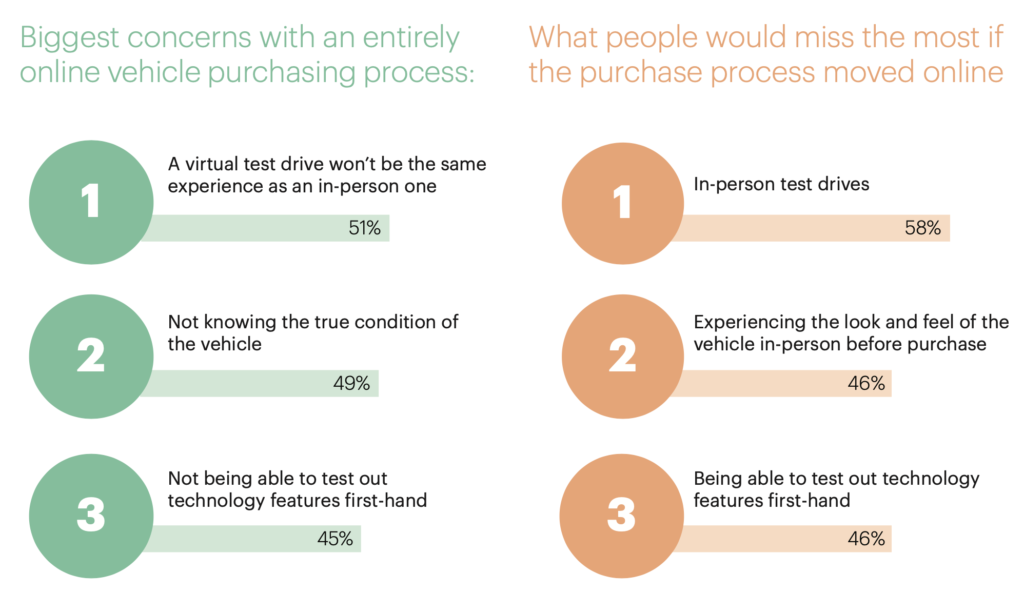

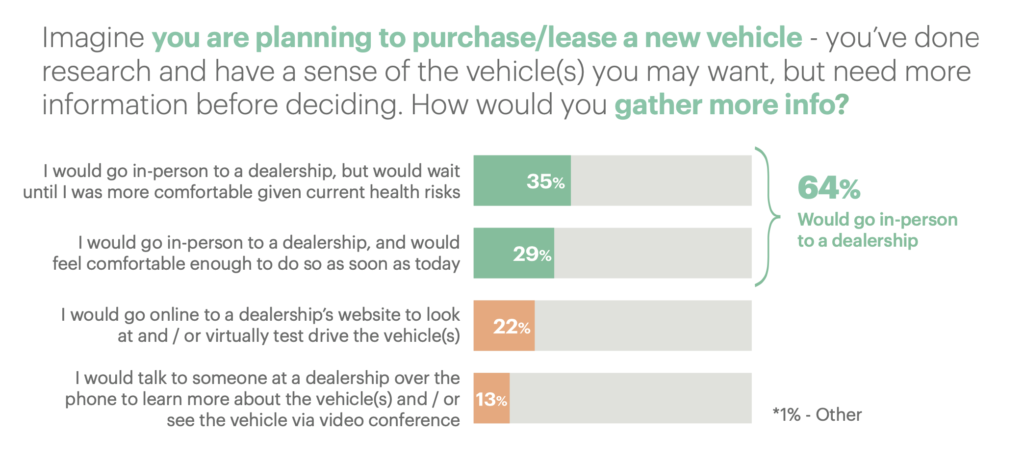
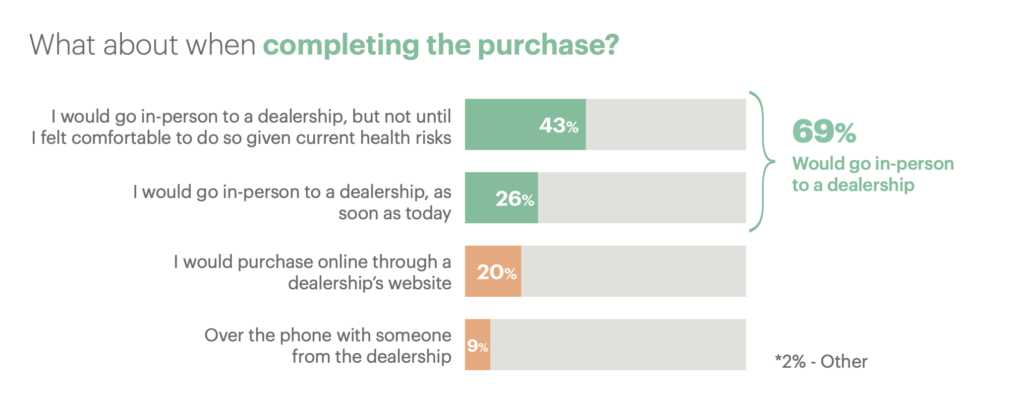




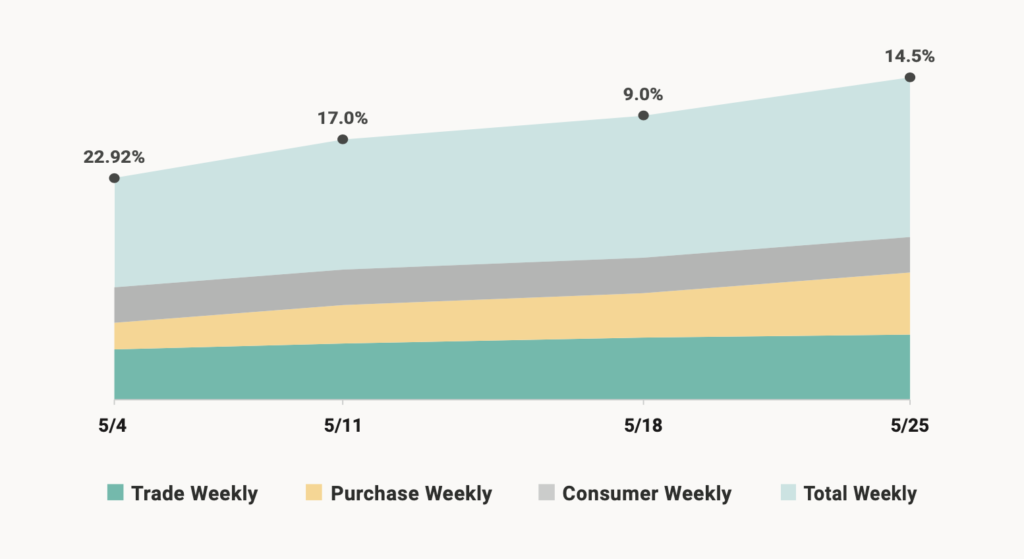
 Data from DealerSocket’s Inventory+ team shows a 20% week- over-week decline in total appraisals the week of March 16, when most stay-at-home orders took effect. Trade appraisals, or appraisals that occur on a customer’s trade-in, were down 26% during the same period, while “Purchase Appraisals” on wholesale and auction units plunged by 35%, according to
Data from DealerSocket’s Inventory+ team shows a 20% week- over-week decline in total appraisals the week of March 16, when most stay-at-home orders took effect. Trade appraisals, or appraisals that occur on a customer’s trade-in, were down 26% during the same period, while “Purchase Appraisals” on wholesale and auction units plunged by 35%, according to 


